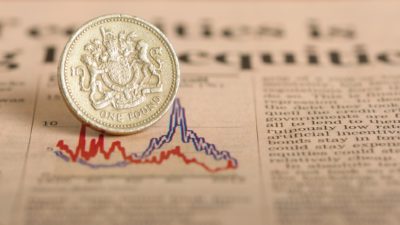The State Pension is not a lot of money. Currently, it’s just £164.35 a week, which equates to £8,546 per year. As I explained recently, that’s not really enough to provide a comfortable standard of living in retirement.
However, if you’re worried about the low amount of income provided by the state, don’t despair, as there are other ways to generate an income in retirement. One such strategy that is popular among UK investors is dividend investing. Below, I’ll show you how dividend stocks could potentially provide you with a retirement income stream that is greater than that provided by the State Pension.
Dividend income
A dividend stock is one that pays investors a regular cash amount out of its profits. These kinds of stocks are very common here in the UK. Well-known companies such as Royal Dutch Shell, HSBC Holdings and British American Tobacco all pay dividends on a regular basis and often the cash payments are quite generous. Build up a portfolio of dividend-paying companies and you could potentially build up a sizeable income stream. So what size portfolio would you need to generate an income stream that is larger than the State Pension payout?
Dividend yield
The answer to that question depends on the stocks you own and the overall dividend yield on your portfolio. Construct a portfolio with a 4% yield and you would need capital of around £214,000 to generate more income than the State Pension. Build a portfolio with a 4.5% yield, and you would require around £190,000 in capital. Stretch your dividend yield to 5% and you would only need a portfolio of £171,000 to beat the State Pension’s payout. Are these yields achievable? Absolutely. Let’s look at an example.
Hypothetical dividend portfolio
Consider the hypothetical portfolio below that contains 10 well-known FTSE 100 dividend stocks.
|
As the table shows, the average yield on this hypothetical portfolio is 5.04%. As a result, with this portfolio you would only need capital of around £170,000 to generate an income stream that is larger than the income from the State Pension.
£170,000 x 5.04% = £8,568
Of course, in real life, you would want to ensure that your portfolio was more diversified than this, in order to reduce the overall portfolio risk. This is also a simplistic example that ignores commissions, fees, FX rates and taxes. Yet the message is clear – dividend stocks can be a fantastic source of income in retirement.
Combining dividend income with the State Pension
While the example above shows that dividend stocks could provide you with a higher income stream than the State Pension in retirement, it’s worth noting that the two sources of income are not mutually exclusive. In other words, there’s nothing to stop you from receiving the State Pension and a dividend income stream, although you may be taxed on your dividends if your dividend stocks are not held in an ISA.
So for example, if you had £9,000 in dividend income coming in each year as well as the State Pension of £8,546, your total income would be £17,546, ignoring taxes. That kind of income stream would certainly help you live a more comfortable lifestyle in retirement than if you were living off the State Pension alone.







